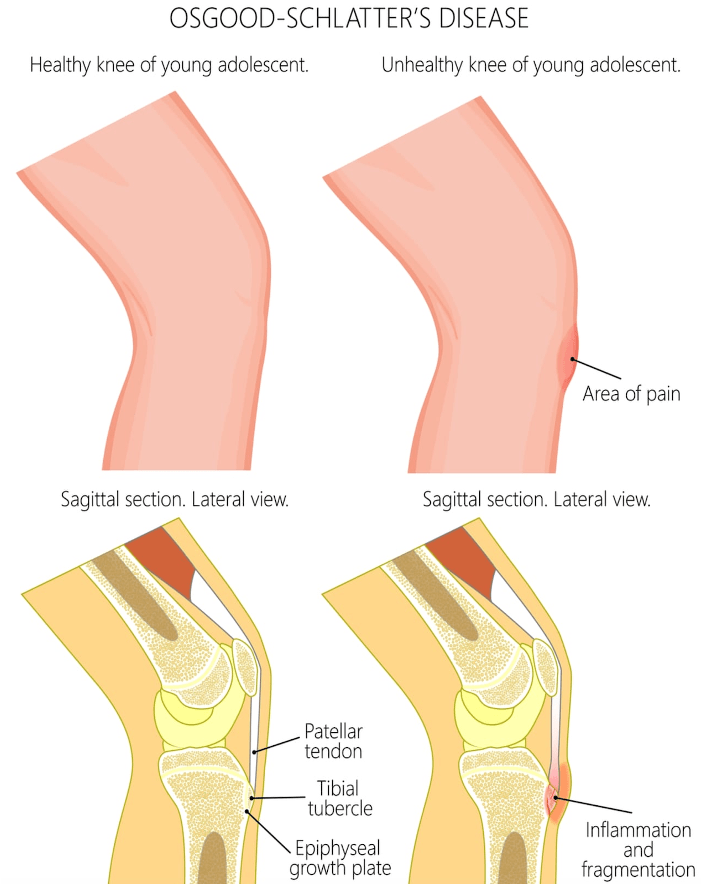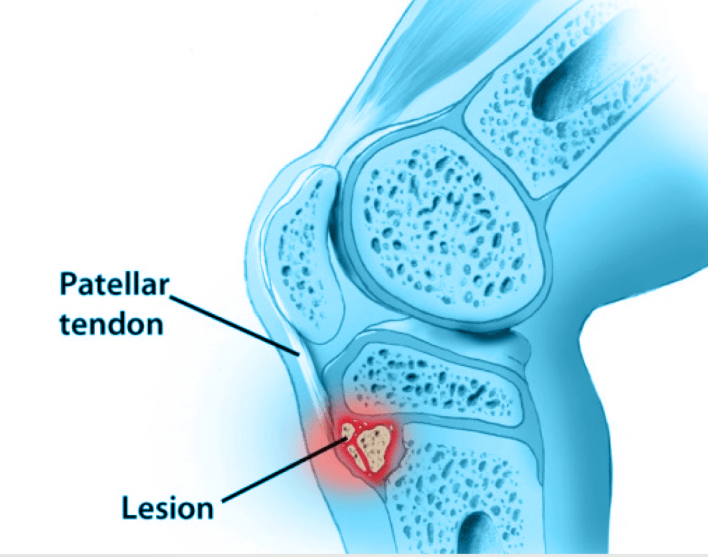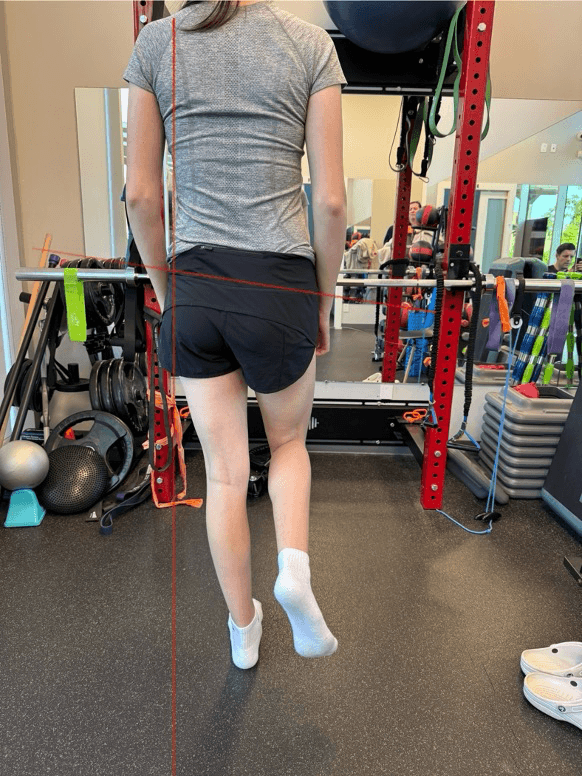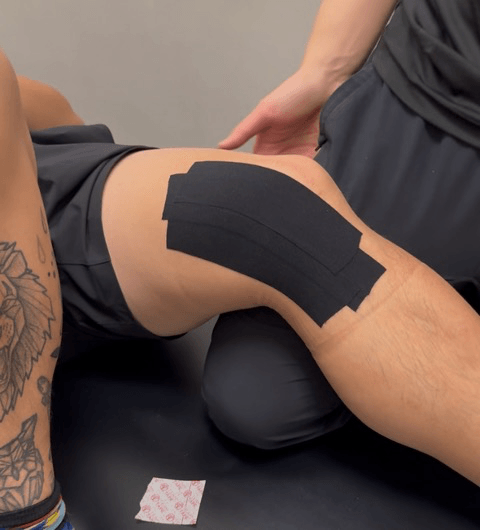Knee pain is one of the most common complaints among youth athletes. Research shows that 15–30% of young athletes experience knee pain, particularly during running, jumping, and high-impact sports. One of the leading causes in adolescents is a condition called Osgood-Schlatter disease (OSD).
Osgood-Schlatter disease is an overuse injury that affects the tibial tuberosity (just below the kneecap), where the patellar tendon attaches to the shinbone. It typically appears during growth spurts (ages 10–15) when bones grow faster than muscles and tendons can adapt.
Symptoms include:


At Pain Free Health, our physiotherapists assess OSD through:
History and exam – tenderness at the tibial tubercle
Movement testing – pain with resisted knee extension or flexion
Differentiation from other conditions such as jumper’s knee, meniscus injuries, or patellar tendonitis

The good news? Osgood-Schlatter is a self-limiting condition that usually resolves as the child reaches skeletal maturity. However, physiotherapy can reduce pain, improve function, and speed up recovery.
Our approach includes:

Most athletes recover well with conservative management. A small bump at the tibial tubercle may remain but is generally painless. Surgery is rarely required.
At our clinic, we recently treated a basketball player with over a year of knee pain. After a thorough assessment, we designed a tailored program including shockwave therapy, IMS, taping, and progressive strengthening. Over time, the athlete regained stability and reduced pain, allowing safe return to sport.
At Pain Free Health clinics across South Surrey, Richmond, Ladner, Langley, White Rock, Queensborough, and Surrey, we specialize in treating youth athletes with knee pain, Osgood-Schlatter disease, and other sports injuries.
Our goal is to get young athletes back to the game safely and stronger than before.
👉 Book an appointment today with one of our physiotherapists to learn more about safe and effective management of youth knee pain.